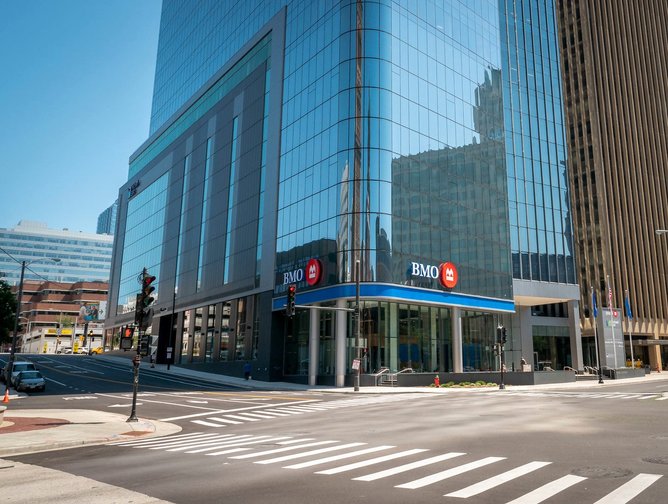BMO Puts Data and Analytics at the Core with Cloud and AI
Banking is now a fundamental function of society and one that comes with many significant challenges that impact the entire ecosystem of stakeholders that share a vested interest in the security of funds, data, and overall economies. To truly understand the extent of which banks leave an impression on these various stakeholders, it’s important to have leaders in place that can, firstly, carry the organisation’s ethos, but also piece together a narrative that incorporates various different perspectives.
What this means for BMO is that it requires someone who is able to assess the various needs of people with different interactions with the organisation—such as customers, communities and staff. It takes great communication and empathy to fully understand the requirements of an influential company like BMO.
This is where Sandip Sahota steps into the frame as the SVP & Enterprise Chief Data and Analytics Officer at BMO, who brings a passion for people into a position that is driving the use of data in banking.
With a focus on continuing to progress the bank’s industry-leading digital experiences, Sahota leads the business’ data functions to provide a number of benefits, including greater efficiency for employees, transparency for the organisation, and greater use of digital solutions to meet the needs of customers. As we begin to understand the vision of Sahota and the mission that BMO has adopted, we see aligned views. Sahota recites the common driver—impact.
“We look at impact—how every decision that we make, our strategy as a whole, has an impact within our communities. Also, how we make an impact economically within our society. And that’s been the focus of the organisation for some time, and it continues to be the way we measure our success,” Sahota explains.
For BMO, this is enabled through its company-wide strategy to enable digital banking for customers, not only keeping up with the times but also providing greater functions for its users. Over the three years that Sahota has been with the company, he has seen this evolution take place, by incorporating digital-first thinking and treating technology as the core of the organisation.
“I’ve witnessed a focus on digital first, thinking about digital not just as a channel but as a true capability. And if you think that to be a digital bank, it’s all about customer journeys, it’s all about employee experiences,” says Sahota. “So, how do we bring together a customer journey that is seamless across any part of our business—that’s seamless within the bank?”
“This capability is grounded on data and the ability to stitch together a customer journey through the right content sets and experiences that analytics helps to drive. So that’s been a big focus.”
But BMO doesn’t just talk the talk. The work going on behind the scenes to achieve this was recognised by a number of industry awards, including three Global Retail Banking Innovation Awards from Digital Banker: Outstanding IT transformation by a Retail Bank, Best Digital Banking Initiative, and Outstanding Machine Learning Initiative “Because of that you can see that our investments are paying off, our focus is paying off, and our customers are rating a top-notch experience in our sector, which is great to see,” Sahota adds.
The significance of the Chief Data and Analytics Officer role
In order to fully understand why the CDAO role is so important in achieving the goal of BMO, Sahota explains the journey that a company must undertake to leverage data to the fullest extent. Within this, he highlights three key stages of the adoption process from information gathering to extracting value for commercial applications.
“The early generation is all about building a data asset that an organisation can get value from. Traditionally, that journey starts because someone in a horizontal type role, for example, a chief risk officer, needs consistency of information across an organisation. So there becomes a need to have someone in the seat to help drive the creation of an asset or the creation of a capability that ultimately can service their needs,” says Sahota.
“As we start doing that, the concept moves to generation two, which is enterprise data. We should have certain domains of data that are consistent across the organisation so we can all speak the same language. Now that we’ve got it in one place, how do we replicate that? In many organisations that could be related to customers, it could revolve around how your organisation is structured, it could depend on your finances.”
Then he brings us to the pinnacle of data and analytics application—the end goal of bringing commercially viable solutions that help generate value from clean, actionable data sources.
“The third generation that we are in now is all about extracting value from all these assets. Now that you are a customer seamlessly across a variety of platforms that you may use, you may have a personal account with us, hold a business account, or have some wealth relationship with BMO, but you could be part of a company that’s looking to go public,” Sahota explains.
“How do we seamlessly create that profile to be able to assist you in a number of ways across the organisation? I think the reason you have someone in the CDAO seat is to get to gen three. You want a data asset, you want enterprise data, then the ability to extract value from it in a seamless way to drive progress for customers, and deliver loyalty, growth and efficiency.”
Citing an analogy that is adopted among leadership at BMO, Sahota shares the approach to always ensuring the foundational functions are achieved, leaving staff free to mould to the needs of its customers. This is a critical ethos to adopt in order to reach the ‘gen three’ stage.
“One of our core principles that we’ve used to help drive that decision-making is ‘solid core, flex edge’. We build these solid capabilities to drive customer experience and our business has the flexibility to get in front of customers as needed with the right tools and capabilities,” says Sahota.
Evolving AI and ML in the banking sector
Notably artificial intelligence (AI) and machine learning (ML) have been present in banking for quite some time. As technologies evolve, the industry uses those to stay current at such a rapid rate of change.
The key here, as addressed by Sahota, is to be diligent and understand the risk factors—for example, client data in a high-risk industry—but also the relevant applications for such technologies. This is where governance comes to the forefront to ensure that expanding AI-based solutions for a bank provides value long-term.
Sahota also stressed the importance of remaining on the same level as technology in order to leverage the new functions in the best ways.
“Today everyone is focused on generative AI (Gen AI), and rightfully so. It gives tremendous value because you’re building upon all this rapid change that’s happening and, given the pace of change and the nature of that change, there’s a wealth of opportunity when applying some of these capabilities,” Sahota says.
On the governance point, he explains: “We have to be very measured and very thoughtful about how to implement these capabilities. For us as a regulated entity, as an entity that’s a custodian of information from 13 million customers, we are considerate of the right approaches and when it makes sense for us to really implement some of this capability”.
One of the key areas in which AI can add value to the business is through automated decision-making. While considering the points above about good governance and keeping a close eye on AI’s functionality, BMO also recognises the opportunity for greater efficiency, by allowing AI to share the burden.
From a customer-focused standpoint, lead generation is key to allowing BMO to repeatedly offer great products. “We can look at a variety of information and suggest a focused set of customers that they can work with,” as Sahota put it. “And a focused set of customers to bring them into the bank or to think about deepening their relationships or to consider how best to bring value.”
Bringing solutions together in the cloud to manage a larger footprint
In order to fully leverage data across the organisation, it must first simplify the way this can be accessed from multiple premises across the country—not to mention bringing onboard 13 states in the US as the organisation celebrates the acquisition of the Bank of the West.
Cloud is the enabler of this data sharing and therefore forms a key part of BMO’s data infrastructure. Sahota will continue to focus on delivering this technology further as the backbone of its ecosystem.
How will the company achieve its goals? Well, partnerships in alignment with the bank will play a key role. Sahota notes the great work taking place with experts in key areas of its digital transformation. BMO is already well established with AWS and Microsoft Azure as major partners for a number of digital functions and developing knowledge within the team to better leverage new and evolving systems.
These solutions will also develop thanks to Vector Institute, an organisation BMO sponsors and a crucial one for delivering more advanced data sciences—Dataiku also being a key partner in this area.
Referring back to automation, Sahota also praises UiPath as its chosen partner for robotic process automation (RPA), which the company has worked with tirelessly to optimise products within the BMO ecosystem.
All-in-all, the work for Sahota and the wider data and analytics teams at BMO never stops and the seamless conversion of Bank of the West in its established ecosystem proves that the bank has a solid digital foundation that continues to grow.
Make sure you check out the latest edition of FinTech Magazine and also sign up to our global conference series - FinTech LIVE 2024
**************
FinTech Magazine is a BizClik brand






